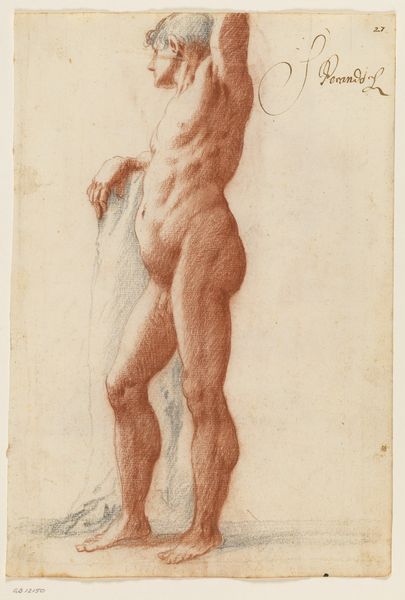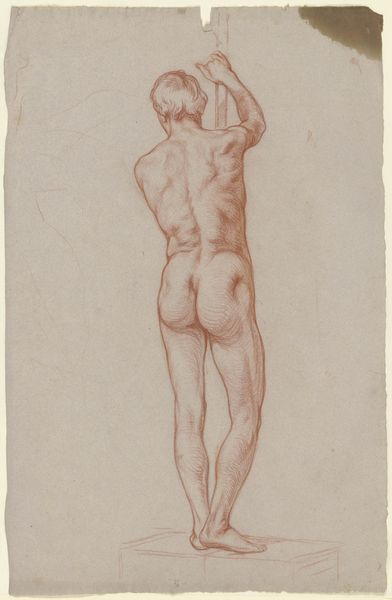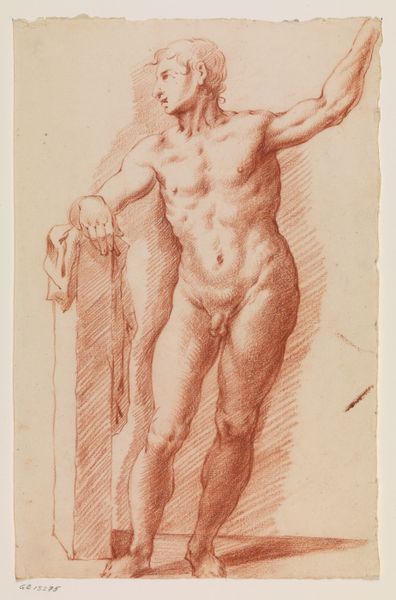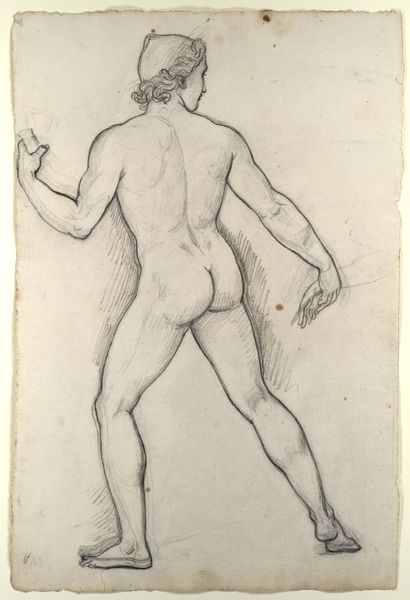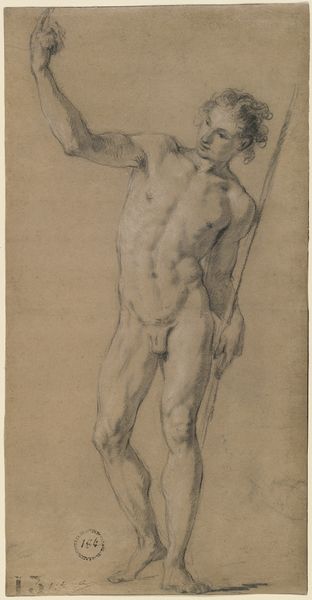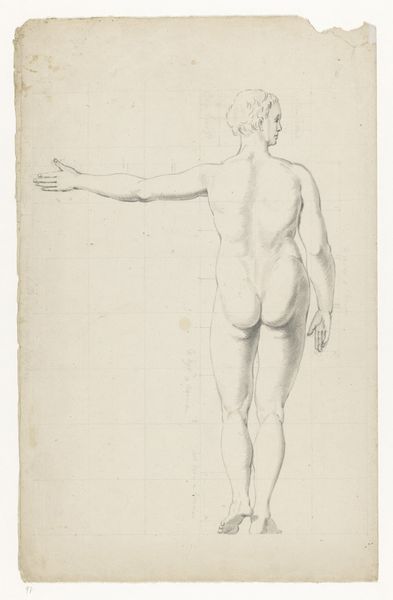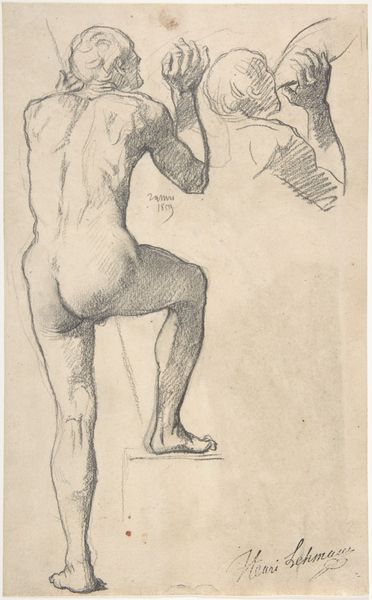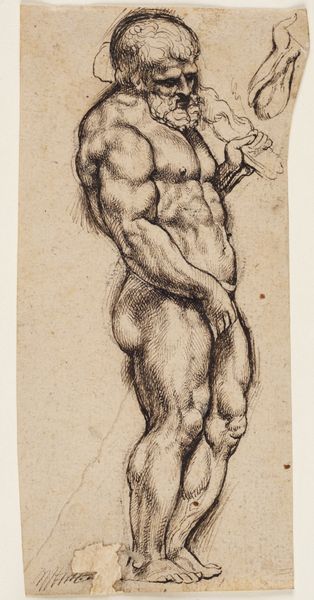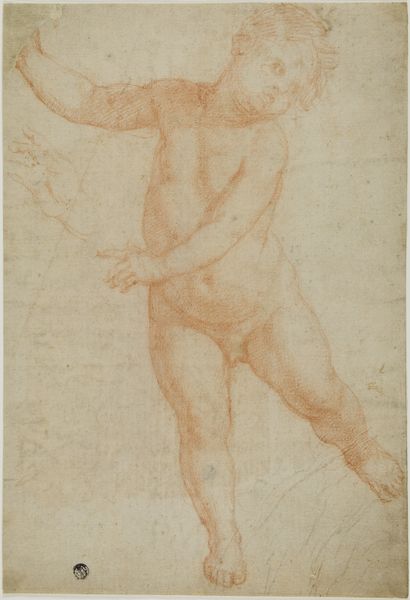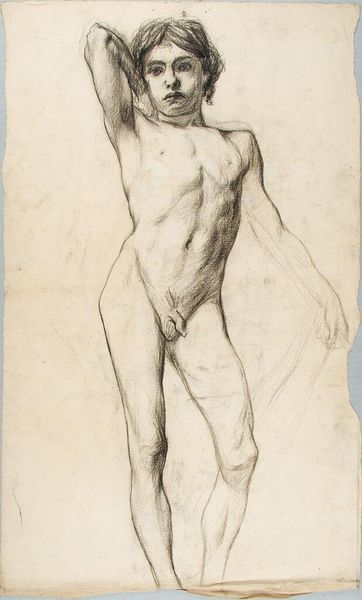
Standing semi-nude male seen from behind with his left arm raised 1600 - 1624
0:00
0:00
drawing, charcoal
#
drawing
#
charcoal drawing
#
figuration
#
11_renaissance
#
charcoal
#
history-painting
#
academic-art
#
nude
Dimensions: 430 mm (height) x 273 mm (width) (bladmaal)
Curator: Standing before us is a charcoal drawing from the early 17th century, circa 1600-1624, titled "Standing semi-nude male seen from behind with his left arm raised." The work is unsigned and of unknown authorship, currently held at the SMK, the National Gallery of Denmark. Editor: The first thing that strikes me is the starkness, the economy of line. You can really see the texture of the charcoal on the page, giving the figure a tangible weight, a sculptural presence even in two dimensions. Curator: Absolutely. It is quite likely a study. Artists in this period frequently produced such drawings as preparation for larger history paintings. Depicting male nudes allowed artists to showcase their understanding of anatomy, referencing classical ideals of beauty. Editor: I am intrigued by that block the figure stands on. It speaks to the staged nature of the image, it is not an observation of an everyday occurrence. You feel the pose, the tension in the raised arm, every sinew rendered visible. It emphasizes the labor involved in both creating and maintaining such a physique. And, of course, the making of the drawing itself. Curator: A valid point. The nude became increasingly central to artistic training during this time, reflecting a growing interest in scientific accuracy and anatomical correctness within academic circles. The positioning of the body suggests that this artwork served as part of an exploration for painters working in grander schemes of history and mythology. Editor: To think about how many times this posture must have been copied and redone by many hands of pupils in workshops to produce a collective, aesthetic language speaks about a larger culture in the act of creating. The materiality brings so much nuance into play. Curator: And how these depictions normalized the male body in art and society through these pedagogic routines. The artist presents a constructed view, idealized. Editor: It makes me consider what realities were overlooked, what forms of labor were rendered invisible, to allow such displays to flourish. Curator: A sobering reminder that behind aesthetic ideals lie complex networks of power and production, and that's one of the key ideas I'll take with me. Editor: I agree. This quick rendering offers a space to consider both the artist’s practice and the physical making.
Comments
No comments
Be the first to comment and join the conversation on the ultimate creative platform.
